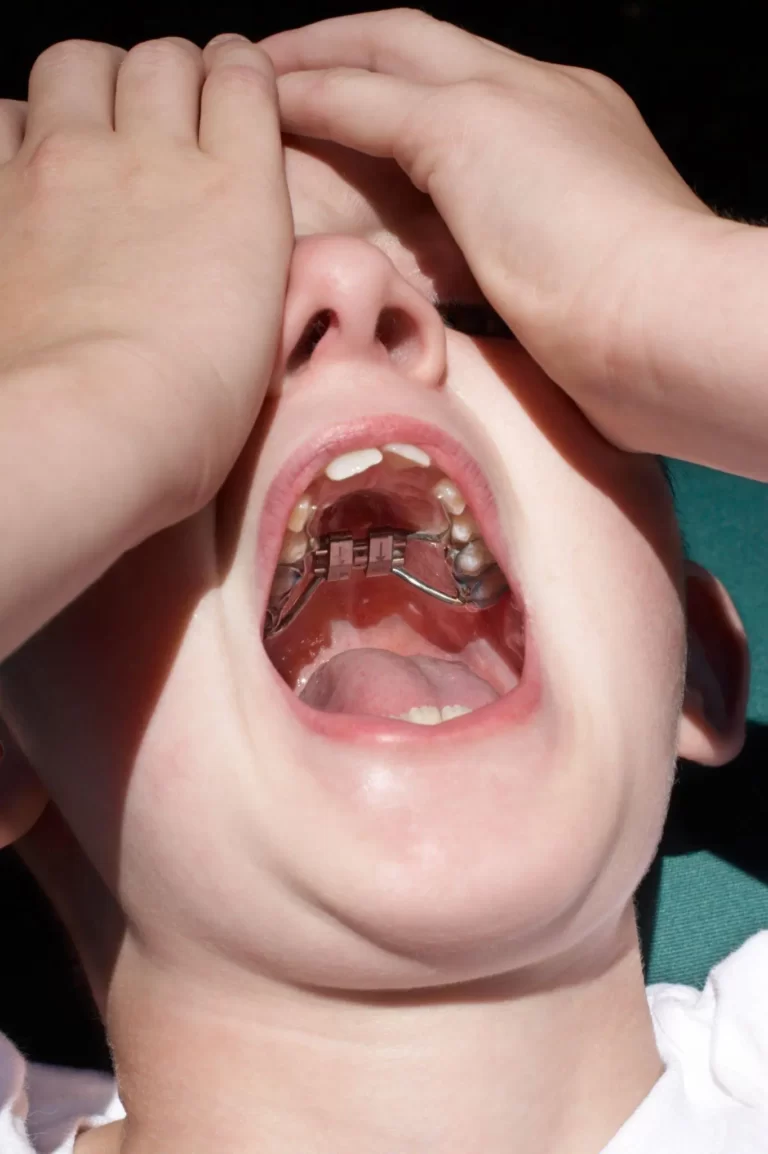Breathe Easy, Live Better: A Palate Expander And Your Airway

Medically Reviewed By:
Dr Leslie Koh
M.B;B.S. (Singapore), MRCS (ENT) Edinburgh, M. Med (ORL), FAMS
With accelerating medical advancements, one innovative but rarely offered tool, is the palate expander. It is gaining more prominence in the field of otolaryngology. Also known as a palatal expander, this simple device has great potential for significant improvements in treating specific health conditions related to the ear, nose, and throat.
Anatomy Of The Palate: A Brief Overview
Structure of the Palate
The palate, better known as the roof of the mouth, is a narrow, arched structure that divides the oral and nasal cavities. It plays an essential role in various functions of daily living, such as eating, speaking, and even breathing.
The Impact of a Narrow Palate
A narrow or deep palate can potentially lead to various complications such as difficulty breathing, speech impediments, and issues with dental alignment. This is where a palate expander can be considered, as it is a simple and effective solution.
Palatal Expanders 101
The Fundamentals
A palate expander is a custom-made orthodontic device fitted in the upper jaw to widen the palate gradually. It exerts gentle pressure on the upper molars each time an adjustment is made, promoting the growth of new bone tissue.
The Role of a Palatal Expander
Palate expanders are used to rectify various issues, including crossbites, overcrowding, and breathing problems. The broader palate allows for better air circulation, can correct speech problems, and provide adequate space for teeth alignment.
Clinical Studies
Various clinical studies have supported the use of palate expanders. For instance, a study published in the American Journal of Orthodontics and Dentofacial Orthopedics revealed significant improvement in patients’ breathing patterns after using palate expanders.

Palate Expanders in Otolaryngology
Palate Expanders and Ear, Nose, and Throat Health
A significant role of the palate expander in otolaryngology is its ability to improve patients’ breathing patterns. By widening the palate, the nasal passages open up, allowing for more air to pass through and improving the overall respiratory function.
Impact on Speech and Breathing
Research has shown that palate expanders can help improve speech issues caused by restricted oral space. The American Speech-Language-Hearing Association indicates that individuals with a narrow palate may experience articulation disorders, which can be corrected with a palate expander.
Research Findings in ENT
Further research in the field of otolaryngology has revealed that palate expanders may be useful in treating conditions such as obstructive sleep apnea, a sleep disorder characterized by repeated episodes of abnormal breathing.
Types Of Palate Expanders
Rapid Palatal Expander (RPE)
The RPE is a commonly used palate expander, especially in children and adolescents. It comprises a screw device that is turned regularly to widen the palate quickly.
Slow Palatal Expander
A slow palatal expander, as the name suggests, operates at a slower pace and is ideal for adults whose palatal sutures have fully formed.
Fitting A Palate Expander
The procedure for fitting a palate expander is straightforward. It involves a visit with an oro-maxillo-facial surgeon, taking impressions of the teeth, creating a custom-made expander, and securing it onto the patient’s upper molars.
Living with a Palatal Expander
Adjusting to a Palate Expander
Living with a palate expander can require an adjustment period. During the initial days, patients may experience difficulties in speech and eating. However, as time progresses, these issues typically resolve.
Care and Maintenance
Maintaining a palate expander is crucial for oral hygiene. Regular brushing, rinsing, and the use of a water irrigator can keep the expander clean and promote good oral health.
Useful Tips and Tricks
While adjusting to a palate expander, it’s essential to stick to softer foods initially and avoid sticky or hard foods that may dislodge the device.
Possible Complications and Their Remedies
While palate expanders are generally safe, potential complications may arise, including mild discomfort, difficulty speaking, and temporary changes in facial appearance. However, these are temporary and resolve once the treatment is complete.
Success Stories Of Using A Palate Expander: An In-Depth Look
Palate expanders have significantly contributed to the transformation of many individuals’ lives, particularly in addressing issues related to speech, breathing, and oral health. Here, we delve deeper into these success stories, backed by scientific studies.
Improved Breathing
Among the primary advantages of palate expanders is the enhancement of breathing capabilities. A previous study published in the American Journal of Orthodontics and Dentofacial Orthopedics showed that patients, specifically children with obstructive sleep apnea syndrome, experienced a significant improvement in their breathing and breathing patterns after the use of palate expanders. The study, which involved children aged between 6 to 12 years, revealed that the use of rapid maxillary expansion via a palate expander led to a significant decrease in nocturnal respiratory issues, resulting in better sleep quality and overall health.
Speech Improvement
Palate expanders have also made a significant impact on improving speech problems. A study published in the Journal of Communication Disorders highlighted that children with a narrow palate who underwent treatment with palate expanders saw marked improvement in their articulation abilities. The widened palate provided more room for the tongue’s movement, leading to more precise pronunciation and clearer speech. Thus, it has brought about a significant positive impact on individuals’ confidence and communication skills.
Alignment of Teeth
Beyond breathing and speech, palate expanders also play an integral role in correcting dental misalignments. According to a study in the Journal of Clinical and Diagnostic Research, adolescents who used palate expanders for a stipulated period showed impressive results in teeth alignment. The widened palate offered additional space for the teeth to align correctly, reducing overcrowding and paving the way for healthier and more attractive smiles.
Improved Quality of Life
The success stories extend beyond specific physical improvements. Many patients have reported an enhancement in their overall quality of life after using palate expanders. This study published in the American Journal of Orthodontics and Dentofacial Orthopedics reported that children who underwent treatment with palate expanders experienced a substantial improvement in their social interactions, self-esteem, and general happiness. This is postulated to be related to enhanced physical appearance, better speech, and improved sleep quality. These success stories, backed by scientific evidence, underscore the potential benefits of palate expanders in otolaryngology.
Conclusion
In ENT practice, palate expanders can significantly enhancing quality of life by addressing various oral and respiratory conditions. The path towards achieving the benefits of palate expanders may seem challenging, with potential temporary discomfort. such as slight speech alterations or dietary changes. Yet, these temporary inconveniences are a small price to pay for the potential long-term benefits.
From correcting malocclusions and crossbites to providing a comprehensive solution for conditions like obstructive sleep apnea, the palate expanders have numerous benefits. Success stories in the field are aplenty, marked by considerable improvements in breathing, speech, teeth alignment, and overall quality of life. Notably, these benefits are not confined to children alone but extend to adults as well, reinforcing the versatility of palate expanders.
Frequently Asked Questions
How Long Does A Patient Typically Need To Wear A Palate Expander?
This varies per case, but usually, it ranges between 3 to 6 months.
Are Palate Expanders Painful?
While some discomfort is normal, particularly in the early stages, severe pain is not typical. Always consult your healthcare provider if you experience severe pain.
Can Adults Use Palate Expanders?
Yes, adults can use palate expanders, but the process is usually slower and more gradual than in children.
What Is The Cost Of A Palate Expander?
The cost can vary widely depending on the specific case and location, but it typically ranges from $2,000 to $3,000.
How Often Does A Palate Expander Need Adjustment?
Adjustments are generally made daily for the first few weeks, and then the frequency reduces.
Disclaimer:
The information, including but not limited to, text, graphics, images and other material contained on this website are for informational purposes only. No material on this site is intended to be a substitute for professional medical advice, diagnosis or treatment. Always seek the advice of your doctor or other qualified health care provider with any questions you may have regarding a medical condition, treatment or medication and before undertaking a new health care regimen, and never disregard professional medical advice or delay in seeking it because of something you have read on this website. If you think you may have a medical emergency, call 995 or visit the nearest Emergency Department immediately. No doctor-patient relationship is created by this website or its use. Neither the owner of the website, nor its employees, or any contributor to this web site, makes any representations, express or implied, with respect to the information provided herein or to its use.
References:
Guilleminault, C., et al. (1993). A cause of excessive daytime sleepiness. The upper airway resistance syndrome. Chest, 104(3), 781-787.
Vallino, L. D., & Zuker, R. (2008). A study of speech, language, hearing, and dentition in children with cleft lip only. The Cleft Palate-Craniofacial Journal, 45(5), 485-494.
Sergl, H. G., et al. (2000). Functional and social discomfort during orthodontic treatment-effects on compliance and prediction of patients’ adaptation by personality variables. European Journal of Orthodontics, 22(3), 307-315.








